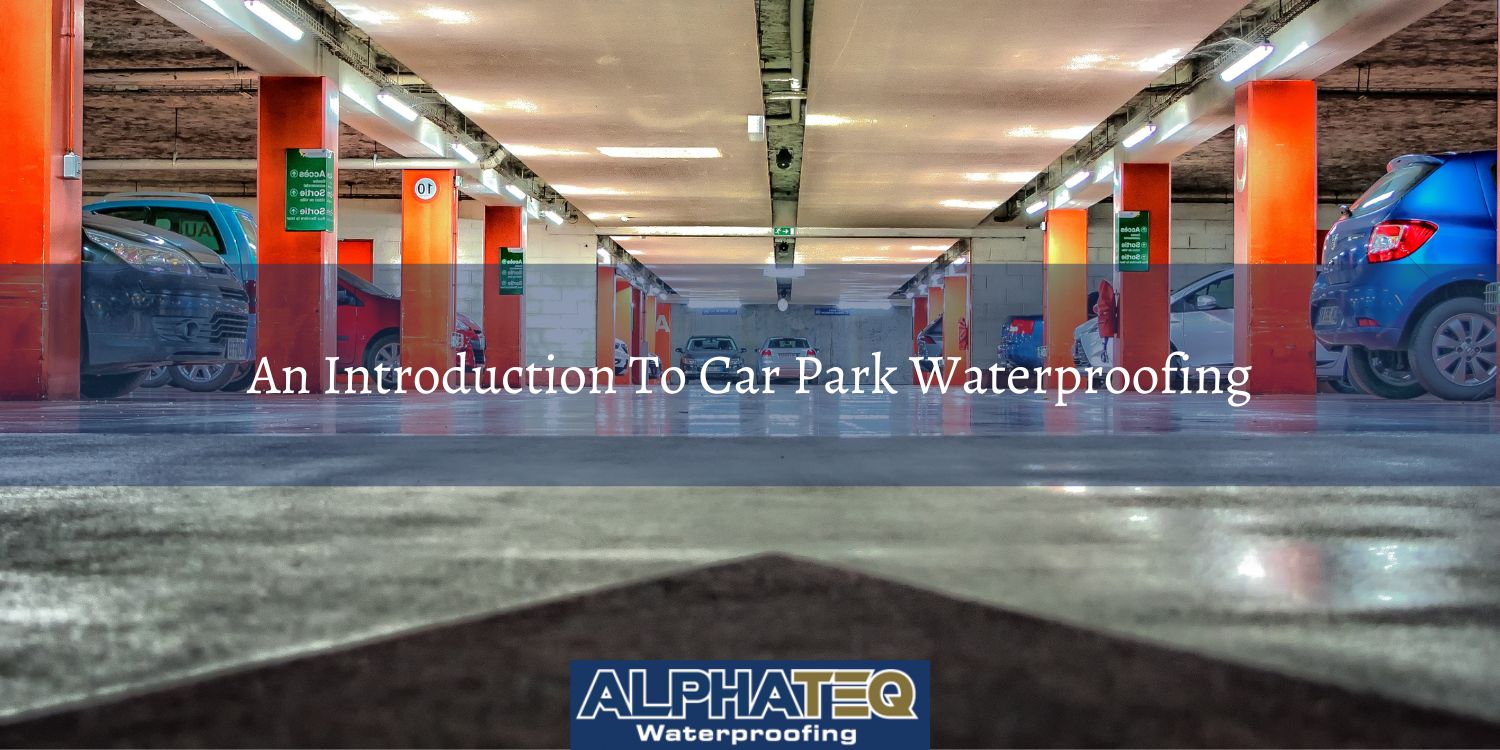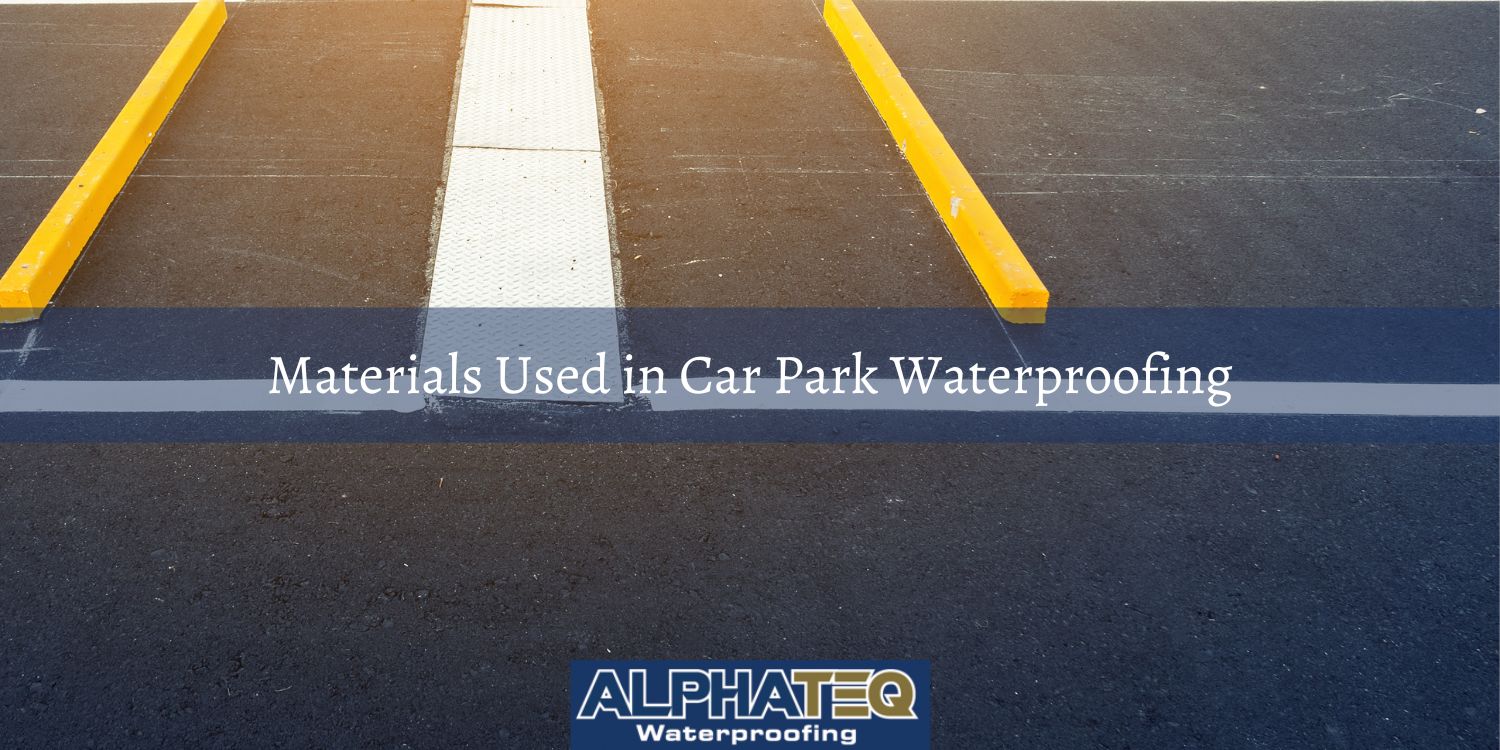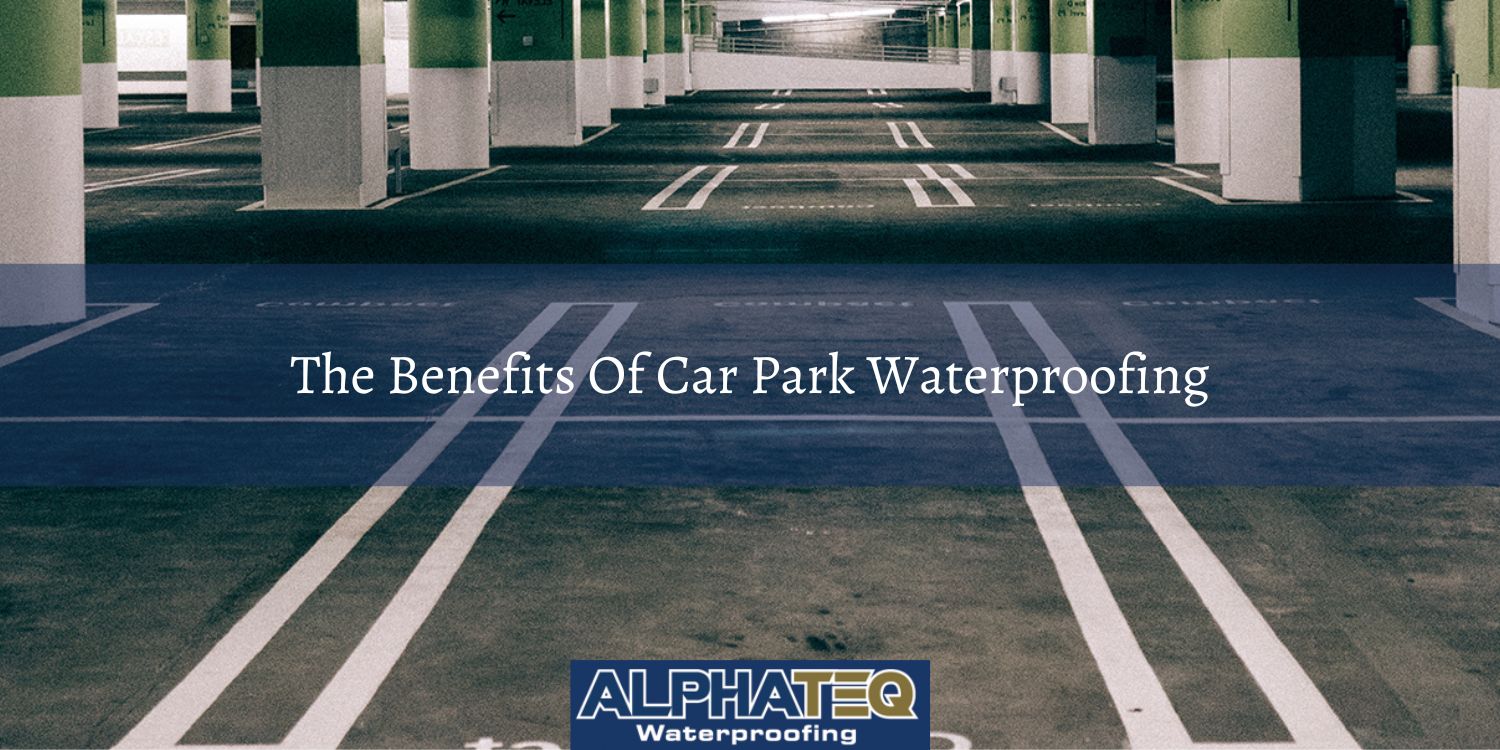I agree Our site saves small pieces of text information (cookies) on your device in order to deliver better content and for statistical purposes. You can disable the usage of cookies by changing the settings of your browser. By browsing our website without changing the browser settings you grant us permission to store that information on your device.

Car park waterproofing is a specialised process that involves applying waterproofing materials and systems to the surfaces of parking decks and structures to prevent water infiltration and protect the underlying structure from water damage. Parking facilities are particularly vulnerable to water-related issues due to the constant exposure to moisture, rain, and vehicle traffic.
Car park waterproofing typically includes surface preparation, repair of existing damage, and the application of waterproof coatings, membranes, or sealants to the parking deck's concrete or other substrates. These waterproofing systems create a barrier that prevents water from penetrating into the structure, reducing the risk of concrete deterioration, corrosion of reinforcing steel, and other structural problems. Car park waterproofing not only extends the life of the facility but also enhances safety by preventing slippery surfaces and minimising the need for costly repairs.

Car park waterproofing is a vital aspect of construction and maintenance for parking facilities, ranging from multi-story garages to open-air lots. It plays a fundamental role in safeguarding these structures against the ever-present threat of moisture infiltration, which can lead to structural damage, safety hazards, and increased repair costs. In this section, we will delve into the essential components of car park waterproofing, its significance in prolonging the lifespan of these facilities, and the potential ramifications of neglecting this crucial aspect of construction and maintenance.
Car park waterproofing encompasses a set of specialised techniques and systems specifically designed to protect parking structures from water intrusion and the associated problems that can arise. Parking decks and structures face continuous exposure to environmental elements, including precipitation in various forms and the presence of moisture from vehicles, which can lead to water infiltration, corrosion of reinforcing materials, and the deterioration of concrete surfaces. Car park waterproofing aims to mitigate these issues by creating a robust and impervious barrier against moisture, ensuring the long-term structural integrity and functionality of parking facilities.
The significance of car park waterproofing cannot be overstated, as it directly impacts the durability, safety, and cost-effectiveness of parking structures. By effectively preventing water infiltration, car park waterproofing systems not only extend the service life of these facilities but also minimize maintenance expenses. They serve as a crucial line of defence against structural damage, such as cracking, spalling, and rusting of support elements, which can compromise safety and structural stability. Furthermore, car park waterproofing contributes to the preservation of aesthetics and minimises the risk of accidents due to slippery surfaces, ensuring the overall well-being of facility users.
Inadequate car park waterproofing can lead to a cascade of issues, each with its own set of challenges and consequences. Firstly, it can result in structural damage, including the corrosion of steel reinforcements and the deterioration of concrete surfaces, leading to costly and extensive repairs. Secondly, safety hazards emerge as a result of slippery surfaces, posing a risk to pedestrians and drivers alike. Additionally, the absence of proper waterproofing can accelerate the degradation of the facility, necessitating frequent maintenance and ultimately increasing operational costs. In summary, neglecting car park waterproofing not only jeopardises the longevity and structural integrity of parking structures but also incurs financial and safety-related consequences that can be easily avoided with appropriate waterproofing measures.

Car park waterproofing relies on a variety of materials and systems to create an effective barrier against moisture infiltration. These materials are specifically chosen for their durability, flexibility, and resistance to environmental stressors. In this section, we'll explore some of the key materials and systems commonly used in car park waterproofing.
Epoxy and polyurethane coatings are popular choices for car park waterproofing due to their exceptional resistance to chemical exposure, abrasion, and UV radiation. They form a seamless and durable protective layer when applied to the surface, effectively preventing water penetration. These coatings are ideal for both indoor and outdoor parking facilities and can be customised to provide slip resistance and aesthetic appeal.
Cementitious waterproofing systems rely on a mixture of cement and additives to create a waterproof barrier. When applied, they bond tightly with the substrate, forming a durable and resistant surface that can withstand heavy traffic and exposure to moisture. These systems are often used for both new construction and the restoration of existing parking structures.
Liquid-applied waterproofing solutions involve the use of specialised liquid compounds, such as bitumen or acrylic coatings, which are applied directly to the substrate. They are known for their ease of application and adaptability to various surface shapes and sizes. Liquid-applied waterproofing systems create a seamless, flexible, and watertight membrane, making them an excellent choice for complex or irregularly shaped parking structures.
Membrane-based waterproofing systems employ sheets or membranes made of materials like rubber, PVC, or TPO, which are mechanically fastened or adhered to the substrate. These systems offer robust and reliable waterproofing solutions, with the added benefit of UV resistance. Membrane-based systems are commonly used in larger parking structures and can be highly effective in preventing water infiltration.
Each of these materials and systems plays a crucial role in ensuring the long-term durability and waterproofing efficacy of car parks, helping to protect the structure and extend its service life.

Applying effective car park waterproofing involves a well-defined process that includes several crucial steps. In this section, we'll outline the key stages in the application of car park waterproofing systems, emphasising the importance of each step.
Surface preparation and priming are fundamental to the success of car park waterproofing. Before applying any waterproofing material, the substrate must be thoroughly cleaned and prepared. This involves removing dust, debris, and any loose or deteriorated material. Additionally, the surface may be repaired and levelled to ensure a smooth and even base. Priming is then performed to enhance adhesion between the substrate and the waterproofing system. Proper surface preparation and priming are critical to ensure the long-term effectiveness of the waterproofing solution.
The application of the waterproofing system is a carefully executed process that varies depending on the chosen materials. It involves applying the selected waterproofing material evenly across the surface, ensuring complete coverage and proper thickness. Techniques such as spraying, rolling, or troweling may be used, depending on the system. Proper application is essential to creating a seamless and watertight barrier that effectively prevents moisture infiltration.
To enhance the durability and longevity of the waterproofing system, protection and wear layers may be added. These layers are designed to provide resistance to abrasion, traffic, and UV radiation. Depending on the system, protection layers can consist of materials like aggregate, coatings, or membrane overlays. These layers not only safeguard the waterproofing system but also ensure that the car park can withstand the rigours of regular use.
Throughout the application process, quality control and inspection are paramount. Qualified personnel should conduct regular inspections to verify that the waterproofing material is being applied correctly, with the right thickness and coverage. Any discrepancies or defects should be promptly addressed and corrected to maintain the integrity of the waterproofing system. Comprehensive quality control measures help ensure that the finished car park waterproofing system performs as intended and meets industry standards.
By adhering to a systematic approach during the application of car park waterproofing, from surface preparation to quality control, the likelihood of achieving a long-lasting, effective, and watertight solution is greatly increased, ultimately protecting the structural integrity of the parking facility.

Car park waterproofing offers numerous benefits that go beyond protecting against water infiltration. In this section, we'll explore some of the key advantages associated with implementing effective car park waterproofing solutions.
One of the primary advantages of car park waterproofing is extending the lifespan of the structure. By preventing moisture infiltration, waterproofing systems protect critical structural components from corrosion, rusting, and deterioration. This protection ensures that the parking facility can continue to serve its purpose for an extended period, reducing the need for premature renovations or replacements.
Car park waterproofing is a cost-effective measure that reduces maintenance and repair costs over the long term. Without proper waterproofing, parking facilities are more prone to structural damage, which necessitates frequent and costly repairs. Waterproofed structures require less maintenance, as they are better equipped to withstand the wear and tear associated with vehicle and pedestrian traffic, weather exposure, and environmental contaminants.
Water infiltration in car parks can lead to slippery surfaces, posing a safety hazard to both pedestrians and drivers. Effective car park waterproofing solutions contribute to enhanced safety by reducing slip hazards. These systems often incorporate slip-resistant coatings or materials that minimize the risk of accidents, ensuring the well-being of all facility users.
Parking facilities are not only exposed to water but also to harmful substances such as oil, fuel, and chemicals that can leak from vehicles. Car park waterproofing systems create a barrier that protects the underlying structure from harmful substances. This protection prevents these substances from infiltrating the concrete or other materials, preserving their integrity and preventing contamination of the surrounding environment.
In summary, car park waterproofing provides a comprehensive range of advantages, including prolonging the structure's lifespan, reducing operational costs, enhancing safety, and safeguarding against harmful substances. These benefits make it a valuable investment for the long-term preservation and functionality of parking facilities.

While car park waterproofing offers numerous advantages, it is essential to acknowledge the potential challenges associated with this process. In this section, we'll explore some of the key constraints and considerations that may arise when implementing car park waterproofing solutions.
Weather constraints during application can significantly impact the effectiveness of car park waterproofing. The application of certain waterproofing materials may be sensitive to weather conditions, such as temperature, humidity, and precipitation. Extreme temperatures or wet weather can affect the curing and adhesion of the waterproofing material, potentially leading to suboptimal results. Planning and scheduling the waterproofing process to coincide with favourable weather conditions are crucial to achieving the desired level of protection.
Car park waterproofing requires precision and expertise to ensure proper installation and long-term effectiveness. Professional application is essential for achieving a seamless and watertight barrier. Inexperienced or inadequate application can result in defects, uneven coverage, or adhesion issues, compromising the integrity of the waterproofing system. Relying on trained and qualified professionals is vital to overcome this challenge and achieve the desired waterproofing outcomes.
The application of car park waterproofing systems may require temporary closure or partial closure of the facility. This possible disruption to car park operation can inconvenience users and impact business operations. Effective planning and communication are essential to minimize disruptions and ensure the safety of users during the application process. Timing the waterproofing work to coincide with periods of lower facility usage can help mitigate these challenges.
Car park waterproofing, while offering long-term benefits, does involve cost considerations. High-quality materials, professional application, and the addition of protection layers can contribute to the overall project cost. However, it's important to view this cost as an investment in the longevity and functionality of the parking facility. Failing to invest in proper waterproofing can lead to more significant expenses in the form of structural repairs, maintenance, and premature replacements down the road.
In conclusion, while car park waterproofing provides substantial advantages, it is essential to address and plan for limitations and challenges such as weather constraints, the need for professional application, potential disruption to car park operation, and cost considerations to ensure the successful implementation of these crucial systems.